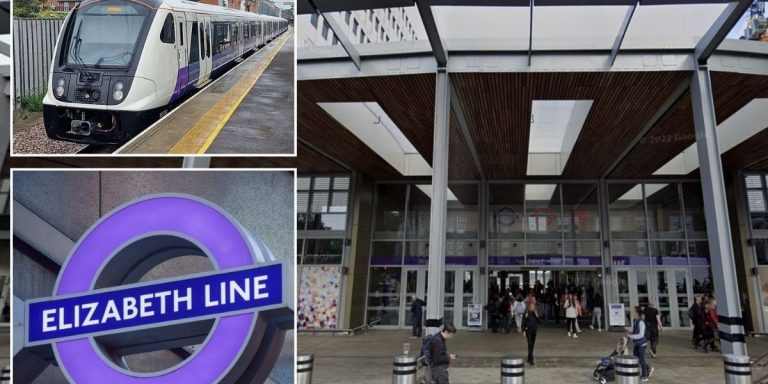As someone who frequently shops for myself, I feel it is my duty to share what I find.
Your in-house TPG shopper is back with her favorites in this curated holiday gift guide.
This guide includes 30 of our top picks for travel tech, luggage, gear and more. Through personal and professional travels, the TPG team has tested and approved many of the items on this list.
From Apple AirPods and AirTags to my most worn Alo products, here are our favorite products to shop this holiday season.
Apple AirTags
What else can we say about Apple AirTags that we haven’t already said? You’re probably familiar with them, but they’re becoming more relevant as Apple and airlines integrate AirTags into their lost baggage processes. When these processes roll out, Apple will debut a Share Item Location feature for AirTags and other accessories connected to the Find My network. What’s key is that this will allow travelers to share the location of an item with a third party, including 15 airlines that have signed on so far.
These coin-size item trackers are a lifesaver for those who travel with checked luggage. Simply pop one into your bag and track your luggage directly on your iOS device.
Buy: Apple AirTag (pack of four) — $72.99 (normally $99); Apple AirTag (individual tag) — $24 (normally $29)
Apple AirPods Pro
Apple AirPods Pro are the only noise-canceling headphones I wear for many reasons. Most importantly, they’re the easiest to travel with, given their compact size. Despite their small footprint, their noise-canceling capabilities stand up to over-the-ear headphones.
Buy: Apple AirPods Pro — $189.99 (normally $249)

Daily Newsletter
Reward your inbox with the TPG Daily newsletter
Join over 700,000 readers for breaking news, in-depth guides and exclusive deals from TPG’s experts
Lulusilk mulberry silk eye mask
Eye masks are my favorite sleep item, whether I am attempting to sleep at home or on a flight.
This Lulusilk mulberry silk eye mask is simple, with an elastic head strap design that prevents tangled hair.
To buy: Lulusilk eye mask — $9.99
Summer Fridays Jet Lag Mask
If you are not doing skincare in flight, I invite you to do so using the Summer Fridays Jet Lag Mask. With niacinamide, glycerin, hyaluronic acid and antioxidants, your skin will feel hydrated, nourished and calm, all before stepping off the plane.
Buy: Summer Fridays Jet Lag Mask — $26
Q portable charger
A portable power bank is another essential travel item, whether you’re heading out for a trip or simply embarking on your morning commute.
This model has built-in charging cables for added convenience.
Buy: Q portable charger — $33.99
Dagne Dover Dakota neoprene backpack
Dagne Dover is one of my favorite brands, and its Dakota neoprene backpack is one of my favorite backpacks for daily and travel needs.
The water-resistant neoprene fabric is not only practical but also vegan for my fellow eco-conscious girlies.
Plus, each backpack comes with a shoe bag, which we love to see.
Buy: Dagne Dover Dakota neoprene backpack — $195
Summer Fridays Lip Butter Balm
As someone who doesn’t wear lipstick, the Summer Fridays lip balm is my go-to product; I love both the vanilla and vanilla beige. This silky smooth lip balm hydrates while providing a sheer touch of color.
Buy: Summer Fridays Lip Butter Balm — $24
Calpak packing cubes
Packing cubes are a travel must, and these cubes from Calpak are TPG favorites. Their durable polyester material holds up whether you’re packing for a ski trip, a hike or a cruise.
Plus, they’re washable and maintain their shape.
Buy: Calpak five-piece packing cube set — $68
Away The Bigger Carry-On
As a staunch carry-on-only traveler, TPG Managing Editor Ellie Nan Storck has used Away’s The Bigger Carry-On for nearly a decade.
“For years, I’ve found the hardshell case durable, the wheels smooth and efficient, and I always manage to pack everything I need,” she said. “I love the addition of a laundry bag, too.”
I’d have to agree with Ellie, and my Away carry-on is my go-to suitcase.
Buy: Away The Bigger Carry-On — $295
July Juliette work tote
Another favorite of Ellie’s is July’s Juliette work tote, which she loves because it doesn’t look like a traditional travel tote.
“Equal parts spacious and chic, it can slide seamlessly onto the back of a suitcase and has all kinds of convenient features, like a 14-inch laptop sleeve, a removable bottle holder, plenty of pocket space and a removable cross-body strap,” Ellie noted.
The color whiskey is my favorite as I am in my brown era, but you can’t go wrong with black.
Buy: July’s Juliette work tote — $245
Dagne Dover Nora shoulder bag
If you don’t carry a purse daily, this shoulder bag from Dagne Dover is small enough to be convenient but still fits the travel essentials and then some.
Buy: Dagne Dover Nora shoulder bag — $110
Bose QuietComfort Bluetooth headphones
Yes, the Bose QuietComfort headphones are pricey, but Ellie is so happy she finally decided to invest in a pair. She said it’s all in the name: quiet and comfort.
“As someone who struggles to sleep on planes (something tells me I’m not unique in that sense), these have been a lifesaver on packed, long-haul flights,” she said. “I find them comfortable to wear for hours and the noise cancellation component is just simply tough to beat.”
Buy: Bose QuietComfort Bluetooth headphones — $199
Ries The Best Sellers refillable travel bottles
If you are new to the world of refillable travel bottles, Ellie said Ries is a great place to start.
Many travelers understand the pain of not being able to leave the house without a full multistep skincare routine (face wash, toner, serums, moisturizer and more).
“These little travel bottles are a sustainable and convenient way to carry what I need without using (and wasting!) single-use plastic bottles each time I head to the airport,” Ellie said. “Plus, they’re TSA-compliant.”
Buy: Ries The Best Sellers refillable travel bottles — $70
Hydro Flask bottle
As a gal on the go, I’ve tried many reusable water bottles, and I have yet to find one superior to Hydro Flask. This 24-ounce bottle is compact enough to travel with yet large enough to keep you hydrated. It is truly the only bottle I’ve ever tried that keeps my water cold (up to 24 hours) while providing a pure taste without transferring flavors.
As someone who adds ice to my bottles, the wide-mouth version is preferable, and the straw creates the ideal drinking experience. Plus, it’s dishwasher-safe and BPA-free.
Buy: Hydro Flask Wide Mouth bottle — $29.96 (normally $39.95)
Dagne Dover Hunter neoprene toiletry bag
Dagne Dover’s neoprene toiletry bag is my favorite toiletry bag I’ve ever owned. I love the water-resistant neoprene for its design and durability. It is easy to wipe clean with water.
Buy: Dagne Dover Hunter neoprene toiletry bag — $65
Alo Accolade straight-leg sweatpants
I have lived in these Alo sweatpants since I purchased them on Black Friday. I can confirm my purchase was worth it, and they will be part of my go-to sweatsuit this winter.
They’re super soft and comfortable but also stay in place during low-impact workouts — particularly if you love to layer with biker shorts underneath (see below). With the matching sweatshirt (also see below), I instantly feel more put-together wearing this sweatsuit out and about.
Buy: Alo Accolade sweatpants — $128
Alo Accolade crew-neck pullover
What are sweatpants without a matching sweatshirt? This Accolade crew-neck pullover perfectly matches the straight-leg sweatpants above.
This is a classic French terry cloth sweatshirt, with ribbed cuffs and hem as well as a dropped-shoulder fit.
Buy: Alo Accolade pullover — $128
Alo Accolade sweatpants
If you prefer more of a classic sweatpants look, these are Alo’s most classic sweatpants. They have an elastic waistband and are cuffed at the bottom.
Buy: Alo Accolade sweatpants — $128
Alo Accolade hoodie
This is the hoodie version of the Accolade crew-neck pullover and is basically the same item with the addition of a hood. I have both the crew neck and hoodie, and I recommend both equally.
Buy: Alo Accolade hoodie — $138
Alo Airbrush high-waist biker short
As mentioned, these are the biker shorts I layer underneath my Accolade sweatpants. Whether as a base layer or on their own, I’ve worn these shorts through various climates and will continue to do so. If you are looking for a longer version, try the 7-inch version.
Buy: Alo Airbrush high-waist biker short — $68
Fellow Carter tumbler
If you’re like me and drink iced coffee year-round, this Carter tumbler is among the most aesthetically pleasing tumblers you’ll find. Even better, it will also keep your cold beverage cold.
If you’re an on-the-go type who exclusively drinks iced coffee, this is for you.
Buy: Fellow Carter tumbler — $35
Rag & Bone Blake wool-blend beanie
I bought this beanie over Black Friday, and I can now recommend it after wearing it a few times. The 97% wool blend has kept me warm during Chicago’s winter so far.
Buy: Rag & Bone Blake wool-blend beanie — $95
LMNT zero-sugar electrolytes
One of my favorite additions to water (when I’m traveling or otherwise) is a zero-sugar electrolyte pack. These ones from LMNT do the trick. The lemon-lime is the first LMNT flavor I tried, and it remains my favorite.
With 1000 milligrams of sodium, 200 milligrams of potassium and 60 milligrams of magnesium, these packets are perfect for on-the-go use.
Buy: LMNT zero-sugar electrolytes — $45
Freecity cotton logo joggers
Freecity’s cotton logo joggers have been making their way across Instagram influencers this year, giving “cool girl who works out.”
If you too enjoy a workout, these sweatpants are currently on sale for just over $100.
Buy: Freecity cotton logo joggers — $100.80 (normally $168)
Serengeti sunglasses
If you’re looking for a new pair of sunglasses, Serengeti is offering TPG readers an exclusive deal. By using the code “THEPOINTSGUY” on North American orders through 11:59 PST on Dec. 31, you can get 20% off sitewide, excluding sale items.
My personal favorite style is the Loy in Shiny Chocolate Brown.
Buy: Serengeti sunglasses — 20% off sitewide, excluding sale items, with the code “THEPOINTSGUY”
Global Entry, TSA PreCheck and Clear
It should be no surprise that TSA PreCheck and Global Entry are on this list.
TSA PreCheck provides expedited airport security through a separate line where travelers don’t have to take off their shoes, belts or light jackets or take out their laptops and liquids.
Global Entry provides preapproved, low-risk travelers with expedited clearance upon arrival in the U.S. from abroad through entry at 75-plus airports.
TSA PreCheck costs $78 to $85 for five years, while five years of Global Entry costs $120. However, a variety of credit cards offer up to $120 in statement credit reimbursement for the application fees.
This credit is typically available every four to five years, though you should check the terms for your specific card for the exact frequency.
If you have one of the below cards offering free TSA PreCheck and/or Global Entry membership, consider gifting it to one of your loved ones:
Far fewer cards cover Clear since the third-party expedited security program costs $199 per year. Still, you do have some options if you want your travel credit card to pay for your Clear Plus membership. Options include:
*Enrollment is required; subject to automatic renewal.
The information for the Centurion, Amex Green and Hilton Honors Aspire cards has been collected independently by The Points Guy. The card details on this page have not been reviewed or provided by the card issuer.
Enroll: TSA PreCheck
Enroll: Global Entry
Enroll: Clear
Bottom line
If you shop this gift guide, use a credit card that rewards online shopping. Whether you are shopping for a loved one or yourself, I hope this list makes your holiday shopping slightly easier.
Related reading:


























+ There are no comments
Add yours